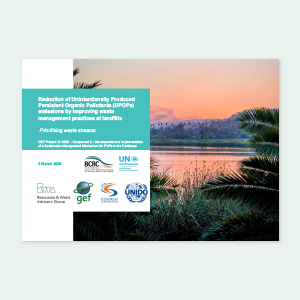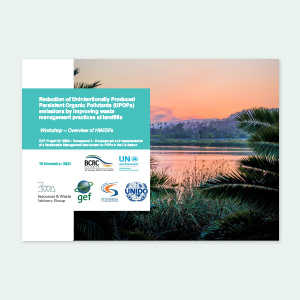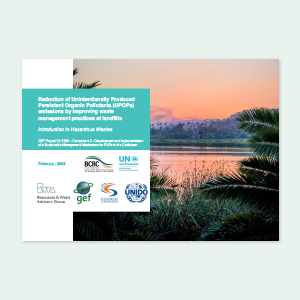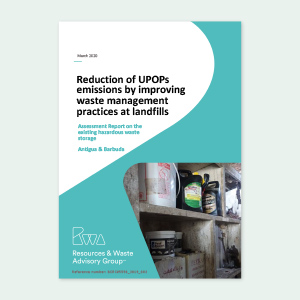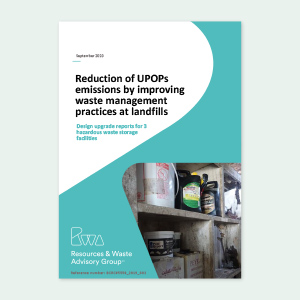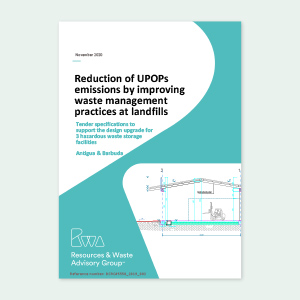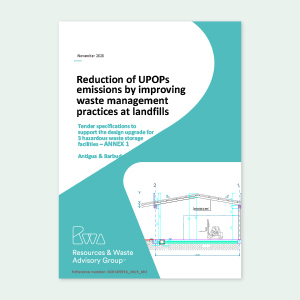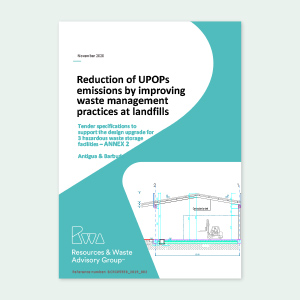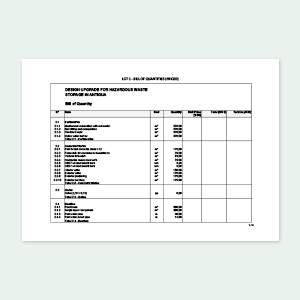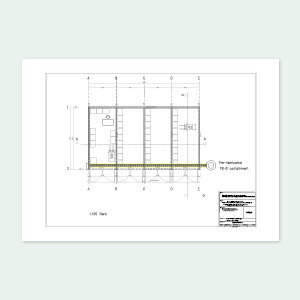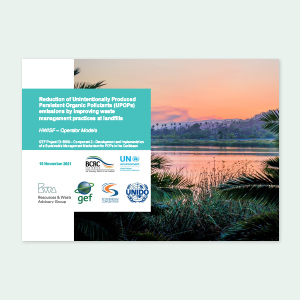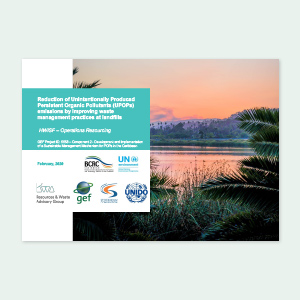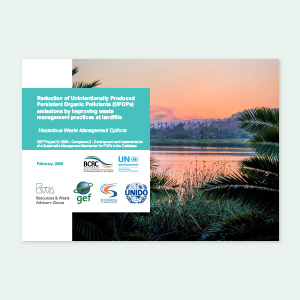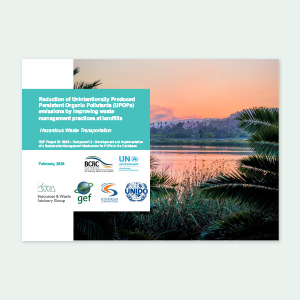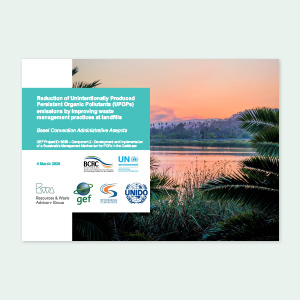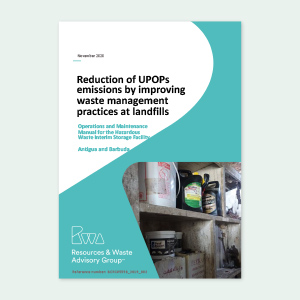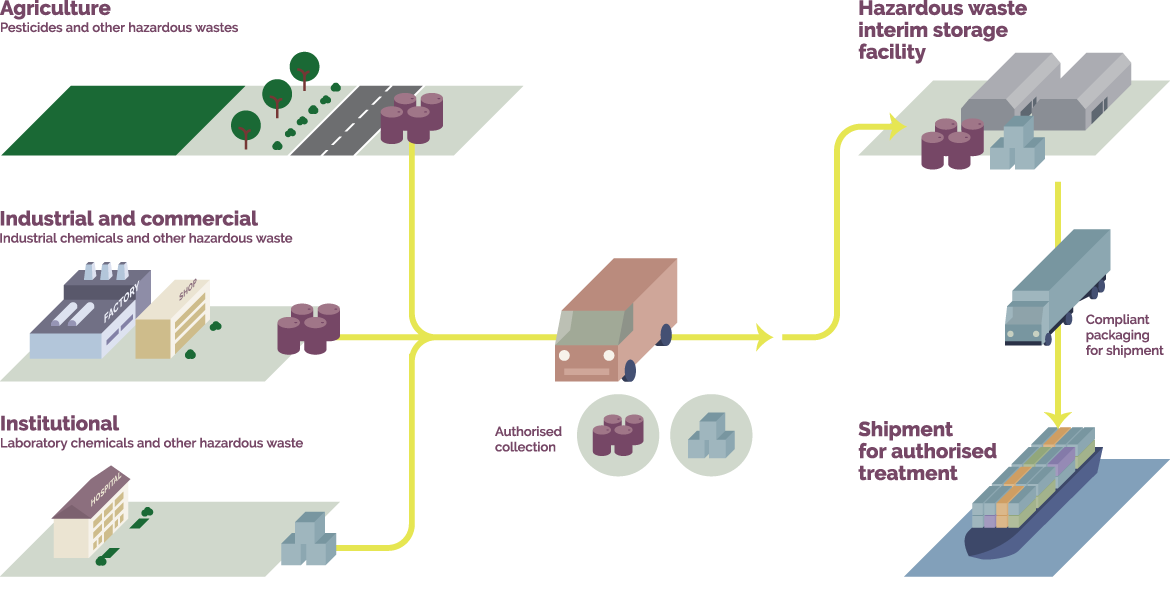
A hazardous waste management service for SIDS
Hazardous Waste Interim Storage Facility
A substance is classified as hazardous if it has a hazardous characteristic (physical, chemical or infectious properties) that poses a substantial present or potential hazard to human health or the environment when improperly treated, stored or disposed of, or otherwise mismanaged. This includes wastes containing Persistent Organic Pollutants (POPs) such as pesticide residues, Waste Electrical and Electronic Equipment (WEEE) with flame retardants containing POPs, etc.
Hazardous wastes present a major challenge for Small Island Developing States (SIDS) where limited waste management options exist and the majority of wastes go to landfills that often don’t have full sanitary containment systems or have liner and or leachate systems that may be irreversibly damaged by hazardous waste, resulting in the hazardous materials leaking out into the environment.
Appropriate facilities capable of recovering or destroying hazardous waste are not available in SIDS. Hazardous wastes therefore require shipment to appropriate authorised facilities abroad, following national legislation as well as Basel Convention procedures. This is best conducted when a critical mass of materials are safely accumulated, packaged and coordinated for compliant shipment. While collecting, accumulating and storing the waste, skilled personnel connected to an appropriate Hazardous Waste Interim Storage Facility (HWISF) are required in country. Specific design and operational considerations are required for such facilities. Such HWISF have the advantage of providing SIDS with:
- The means to facilitate interim storage and export of hazardous wastes that provide for environmentally sound Hazardous Waste management
- Facilitate bulking, regrouping, repackaging and labelling of hazardous wastes for storage and subsequent shipment to licensed facilities for recovery/treatment/disposal
- Storage of hazardous wastes safely before shipment to licensed recovery/treatment/disposal facilities
- Rationalise logistical costs through the collection, storage and shipment of the maximum quantity of hazardous wastes
- Located away from sources of heat or fire
- Not located in areas that have the potential to be flooded or close to the edge of a hill or slope
Establishing a HWISF enables the diversion of hazardous materials from landfills and becomes a key facility within an integrated sustainable waste management system. Ensuring the integrated management of waste streams and facilities is important to ensuring a systems approach is adopted that covers the whole waste management sector. Prior to developing a HWISF, an assessment of the sector and hazardous waste generation should be undertaken.
The following presentations provide some insight into identifying priorities and understanding the hazardous waste sector:
Assessment of HWISF – Antigua example
This report provides an example assessment of the Hazardous Waste management sector in Antigua and Barbuda
HWISF Design report – Antigua example
Following the assessment of the sector, a location and HWISF conceptual design can be developed. The following reports provide an example of this from Antigua and Barbuda
Hazardous Waste Facilities – Operator Models
A HWISF is worth nothing without a well structured and sustainable operator model and qualified operator. Without this, the HWISF is an empty building at best and a liability at worst. The following presentations provide an overview into the operational aspects of a HWISF. An example operations and maintenance manual developed for Antigua and Barbuda is also included for guidance
Videos
Polyeco Group in Mauritius
Example HWISF (short video)
Funded by
Global Environment Facility (GEF)

Implemented by
The United Nations Industrial
Development Organization (UNIDO)

Executed by
The Basel Convention Regional Centre for Training and Technology
Transfer for the Caribbean (BCRC-Caribbean)


